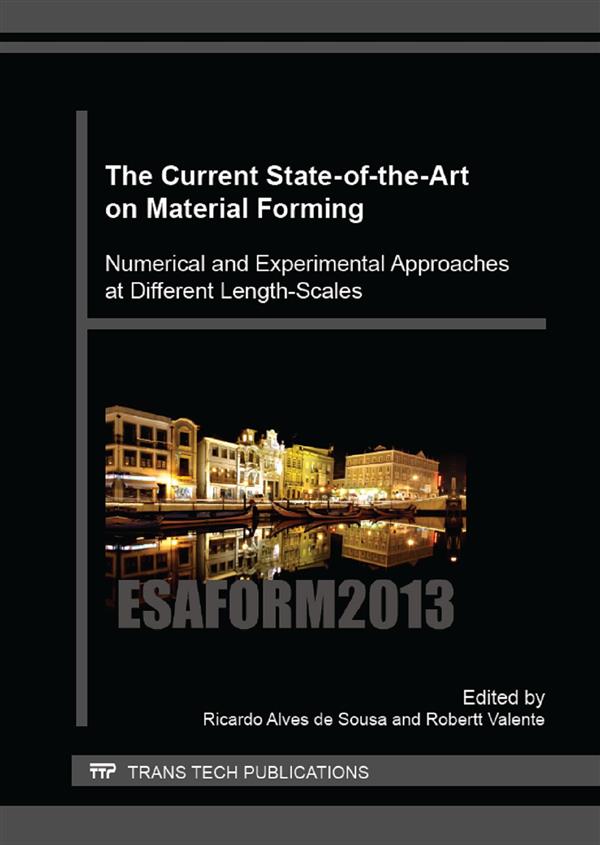Engineering Research
Materials Science
Engineering Series
The Current State-of-the-Art on Material Forming
Subtitle:
Numerical and Experimental Approaches at Different Length-Scales, ESAFORM 2013
Description:
The collection of 282 peer reviewed papers aims to promote the interest for all types of materials and all topics connected to Material Forming.
The papers are grouped as follows:
Chapter 1: Formability of Metallic Materials
Chapter 2: Forging and Rolling;
Chapter 3: Composites Forming Processes;
Chapter 4: Semi-Solid Processes;
Chapter 5: Light Weight Design and Energy Efficiency in Metal Forming;
Chapter 6: New and Advanced Numerical Strategies for Material Forming;
Chapter 7: Extrusion and Drawing;
Chapter 8: Friction and Wear in Material Processing;
Chapter 9: Nano-Structured Materials and Microforming;
Chapter 10: Inverse Analysis Optimization and Stochastic Approaches;
Chapter 11: Innovative Joining by Forming Technologies;
Chapter 12: Multiscale & Continuum Constitutive Modelling;
Chapter 13: Incremental and Sheet Metal Forming;
Chapter 14: Sheet-Bulk-Metal Forming;
Chapter 15: Heat Transfer Modelling;
Chapter 16: Structures, Properties and Processing of Polymers;
Chapter 17: Non-Conventional Processes;
Chapter 18: Machining and Cutting;
Chapter 19: Integrated Design, Modelling and Reliability Assessment in Forming (I-DMR);
Chapter 20: Finite Element Technology and Multi-Scale Methods for Composites, Metallic Sheets and Coating Models;
Chapter 21: Intelligent Computation in Forming Processes.
Purchase this book:
Info:
Review from Ringgold Inc., ProtoView:
This three-volume set collects papers from an April 2013 conference. Volume 1 presents work in sections on formability of metallic materials, forging and rolling, composites forming processes, semi-solid processes, and light-weight design. Other subjects addressed in this volume include energy efficiency in metal forming, numerical strategies for material forming, and friction and wear in materials processing. Papers in Volume 2 are grouped in sections on nano-structured materials and microforming, inverse analysis optimization and stochastic approaches, innovative joining by forming technologies, and multiscale and continuum constitutive modeling. Some other areas described are incremental and sheet metal forming, sheet-bulk-metal forming, heat transfer modeling, and structures and properties of polymers. Volume 3 contains work on non-conventional processes, machining and cutting, integrated design, finite element technology, multi-scale methods for metallic sheets, and intelligent computation in forming processes.

